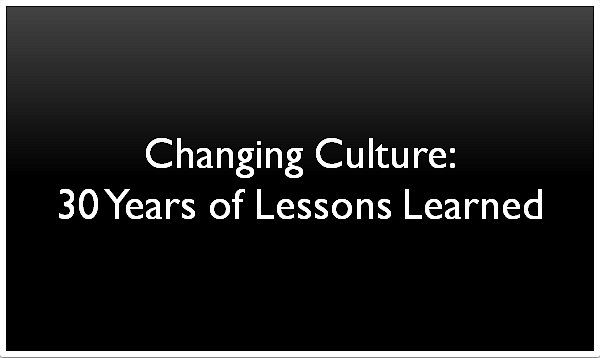Mergers & Acquisitions – The Case for Culture
Mergers & Acquisitions – The Case for Culture
Is Paying Attention to Culture a Worthwhile Investment
The research revealed that without a disciplined approach to culture assessment, the company faced rapid erosion of the value of its acquisitions. Loss of critical talent, lagging productivity, compliance and risk management issues and delayed integration were just some of the issues described by leaders when culture was not on the agenda as part of their M&A due diligence and integration planning.
Understanding Cultural Differences affects the Success of M&As
The degree of effort invested in understanding cultural differences affected the success of the acquisition. While some acquisitions moved slowly and carefully in order to ‘not break what is working’, others followed an aggressive timeline. The less attention that is given to culture, the higher the risk of problems during integration such as:
- The acquired company was not prepared for the level of compliance and metrics that the company demanded and almost lost all of their key employees in the first 3-6 months.
- Serious compliance issues were experienced due to a difference in beliefs regarding the need to follow rules.
- Unclear communications and high volume of integration-related activities disrupted work and put the retention of top talent at risk.
- Misalignment in what people were told to expect and what actually happened resulted in 50% of staff at one acquisition, the best people, leaving the company.
Where People are Key to Success, a Culture Assessment is Essential
Leaders said a culture assessment was essential for all acquisitions where people are key to success.
- Some leaders couldn’t think of a case when it isn’t needed while others thought that it is vital where human capital is key to value.
- There was some agreement that where product lines or contracts are the purchased asset, culture only needs to be monitored and a quick scan approach could be sufficient.
- For companies that are founder-led and start-ups where culture shock can quickly impact productivity and retention of employees and customers, leaders believe a culture assessment process is vital to success.
A Culture Assessment Prevents Many M&A Pitfalls
Leaders indicated that a culture assessment could have helped avoid and/or be better prepared to address challenges often encountered during a merger or acquisition. Specifically, it could help them to:
- Identify non-negotiable areas that lead to No Go decisions earlier (i.e. lack of high ethical standards).
- Predict problems and avoid early missteps by better understanding the impact of decisions before implementing them.
- Develop a robust integration plan that prevents loss of asset value (key accounts, top talent).
- Improved ability to sequence and phase integration to minimize disruption of work.
- Understand people’s appetite for change and tailor change management and communications plans accordingly resulting in less angst, resistance and attrition.
- Build communications that explain why and what will happen that connects with people and will be heard.
- Manage expectations and set a pace of change to manage risk.
- Create opportunities to gain the buy-in and support of acquisition leaders and other critical resources thereby decreasing the risk of attrition.
M&A Culture Assessment is Key to Success
Identify Cultural Differences Early in the Acquisition Process
Leaders believe culture should be assessed, when possible, early in due diligence to no later than 30 days after close to get the maximum benefit.
- Pre-close was ideal to provide input to the decision to move forward with a deal.
- Post-changeover efforts are valuable inputs to integration plans.
- Even later in the process, culture tensions can be identified and addressed.
Sponsorship by Business Unit Executives makes a Difference
Leaders emphasized that active business unit sponsorship was very important to ensure players are aligned and doing what is needed for the acquisition to be successful. Examples were provided where direct intervention by the senior executive led to better decisions and prevented actions that were detrimental to the success of the acquisition. For example, senior executives:
- Slowed down integration activities that were disrupting the business and affecting acquisition ability to achieve financial results.
- Delayed implementing changes until there was a better understanding of the potential impact on the business.
- Acted as an advocate for the acquisition when decisions were being made by functions.
It is critical to engage leaders in the acquired company as soon as possible after the close, preferably on Day One or, at the latest, within the first 30 days. In addition to building trust and strengthening relationships, this helps the acquirer to learn why things are the way they are and understand the implications of potential changes. This would also allow for the timely communication of integration plans to employees, which is important to reduce anxiety and maintain productivity during the transition. Engaging leaders is most effective when the acquirer:
- Spends time with local leaders and their teams, not just senior leaders.
- Uses focus groups to engage employees and get their input to change plans.
- Provides clear communications about the rationale for the acquisition and plan.
- Engages department heads of both businesses in the culture dialogue.
Involve Leaders of the Acquired Company Immediately After Close
The Outcome – A Set of Culture Tools for M&A
The outcome of this research was the development of a set of culture tools to support the M&A process.
- Culture Due Diligence process and tools that are used in the early stages of due diligence.
- Culture Integration process and tools for identifying cultural similarities and differences, including areas of synergy and tension.
Used pre- or post-changeover, the tools provide due diligence and integration of team members, HR and top leaders with the kind of information needed to support decision making, communications and transition planning.
With a streamlined process and a small set of highly informative tools and processes, the client now has an M&A culture game plan for more effective integration planning that will protect the value of the asset.
Download a copy of this article here.










